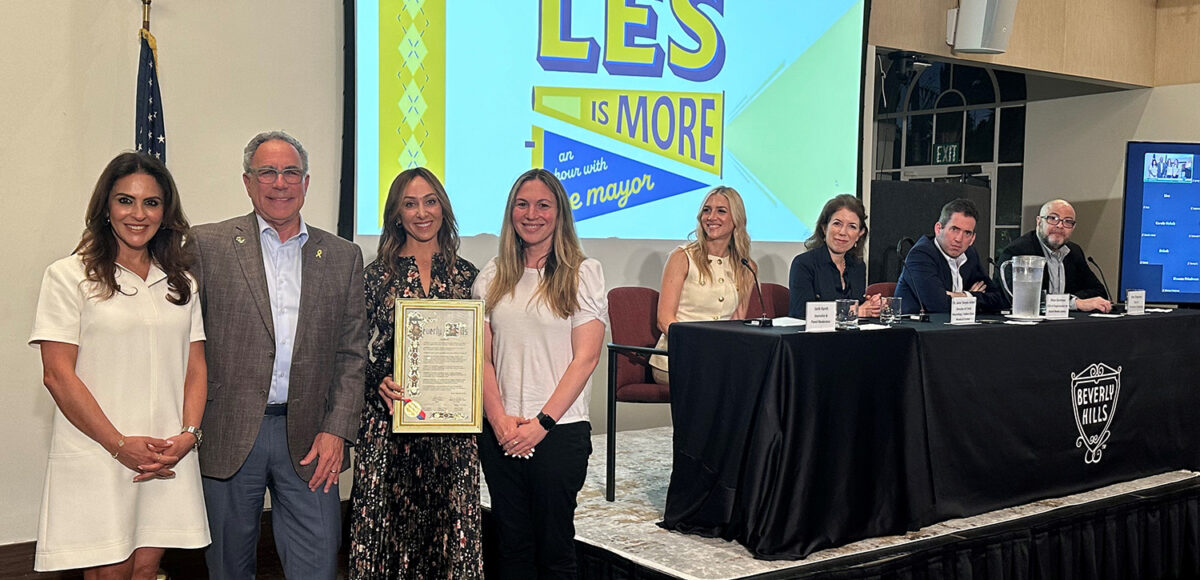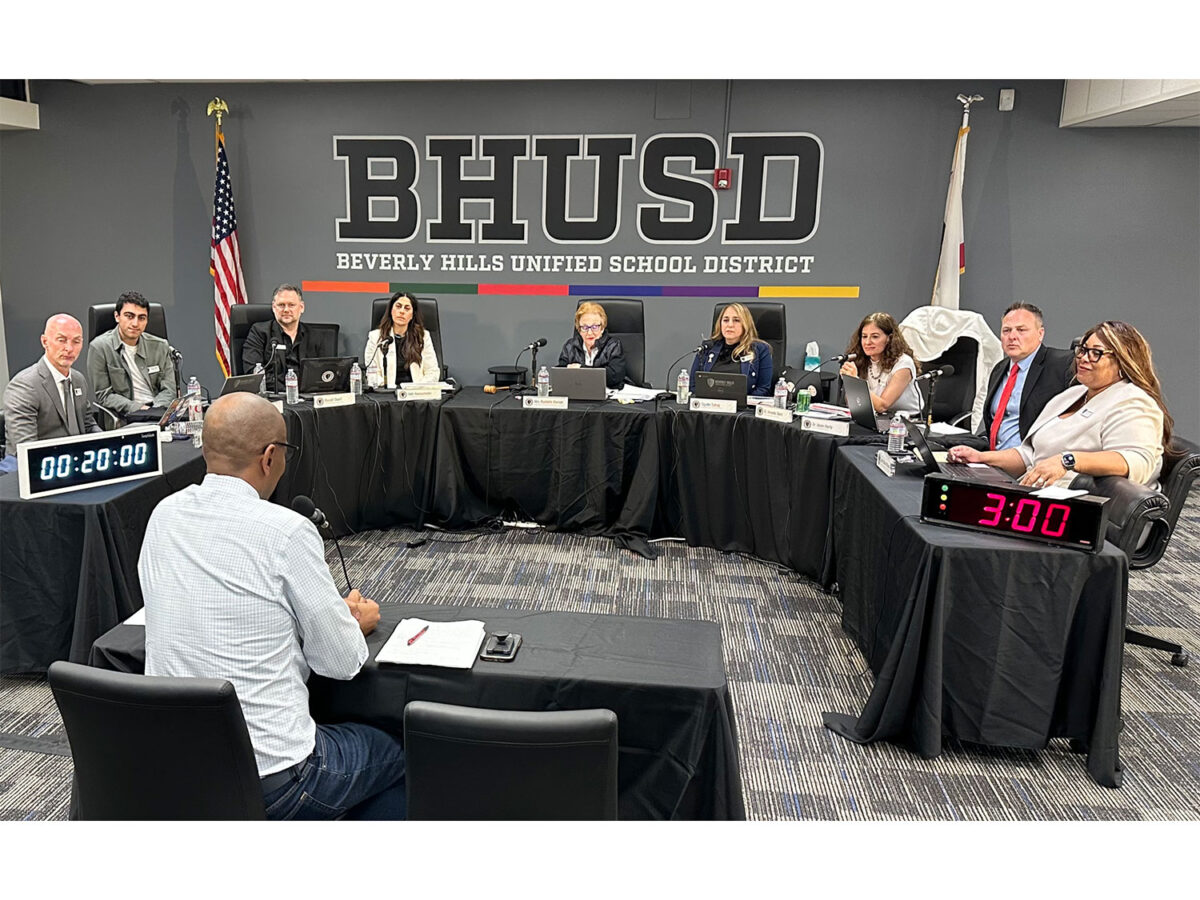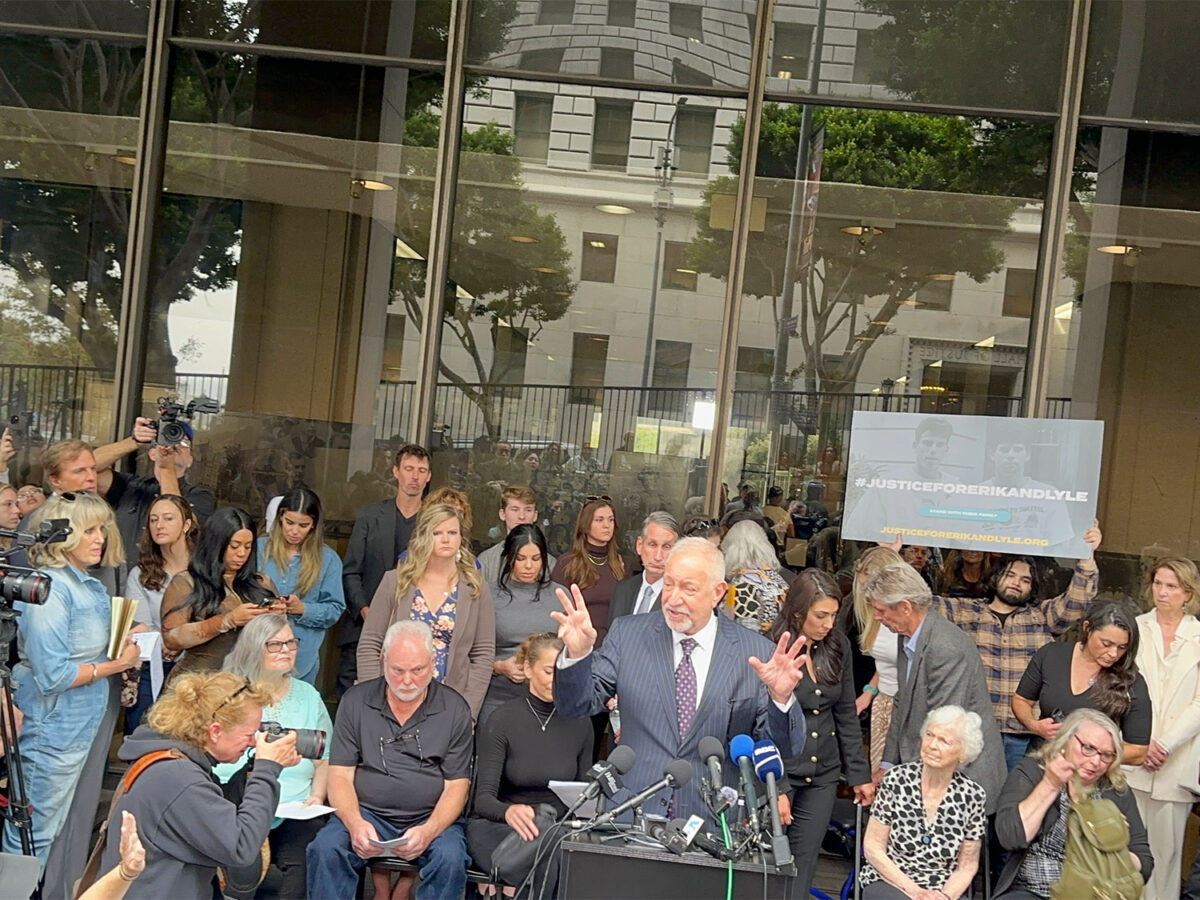On Wednesday 4th September, Mayor Lester Friedman held a special 90-minute event as part of his ‘Les is More: An Hour with the Mayor’ talk series. Chaired by Emmy-nominated journalist Jacki Karsh, the event coincided with the City’s ‘Social Media Safety Day,’ and saw three panelists discuss the impact of social media on young people in relation to anxiety, illegal activity, self-harm and cyberbullying, amongst other issues. City-wide measures and preventions to help mitigate these impacts were also discussed.
Dr. Jane Tavyev Asher, a board-certified child neurologist and Director of Child Neurology at Cedars-Sinai Medical Center, kicked things off by explaining the science behind why social media use is such an important issue for children and teenagers. “As adolescents, their frontal lobes haven’t finished developing yet which means whatever they are faced with [on social media] is changing the actual formation of the brain,” she said.
Dr. Asher elaborated on how social media has different impacts for both young boys and young girls. “Girls are creatures of contagion – they’re trying to fit in at this stage of their life. So, scrolling through social media and seeing all of these people who are older and more famous than them really affects their expectations of what might become of themselves,” she said.
Boys, on the other hand, have a more dopamine-driven brain, making them more prone to technology addiction. Dr. Asher also noted how social media allows the embarrassing moments that every adolescent suffers from to “live on,” the effects of which can be devastating for some young people.
The panel also included several poignant contributions from Sam Chapman, CEO of The Parent Collective and a strong advocate for social media safety. In 2021, Chapman’s son, Sammy, tragically died after purchasing a fake prescription pill for Xanax on the social media messaging app Snapchat. The pill was later found to be laced with fentanyl. According to the Organization of Social Media Safety, 24% of young people see illicit drugs advertised on social media. This fact, along with his own personal experience, has spurred Chapman to push for the passage of Sammy’s Law (HR5778). Sammy’s Law is a federal, nonpartisan legislation that will require all social media platforms to give parents the choice to use third-party safety software, which can protect children from dangers like substance abuse, cyberbullying, suicide and many other issues.
Although it’s a strong first step, more work needs to be done to get the apps on board with such monitoring and policing measures.
“Unfortunately, most of the platforms our kids use do not allow for [these measures], such as TikTok, Snapchat and Discord. Snapchat has become the dark web for children, and that’s where most of the drug deals are done,” Chapman said.
Mark Berkman, CEO of the Organization for Social Media Safety, has been on the frontlines of crafting new social media laws like Sammy’s Law, amongst others. “I do want to emphasize that while there has been growing awareness of the danger of social media, it still is insufficient. It is far more severe and pervasive than so many realize,” Berkman said.
One bill that the Organization for Social Media Safety recently helped pass in California would allow principals and mental health professionals to report dangerous content they see on social media, that could pose a threat to children who use the platforms. Under this law, social media companies would then have to review and respond to that report within 24 or 72 hours, depending upon how severe the professional determined it to be. Berkman hopes the bill will help alert platforms to content that could trigger eating disorders and suicidal ideation, which often goes ignored.
Los Angeles Unified School District Board member Nick Melvoin recently spearheaded a resolution with support from the Organization for Social Media Safety which would prohibit smartphone use on school grounds. “There’s impacts we’re seeing on educational achievement because students are using social media instead of paying attention in class unfortunately,” Berkman said.
Another bill discussed was the Protecting Our Kids from Social Media Addiction Act (SB 976) by state Sen. Nancy Skinner. This passed on Saturday and is sponsored by California Attorney General Rob Bonta, the Association of California School Administrators, the American Academy of Pediatrics and many more educators, health professionals and advocates.
SB 976 would require social media platforms to turn off the algorithms that promote addictive feeds for users under the age of 18, as well as pause notifications during school hours and between midnight and 6 a.m. on school days. Minors’ accounts would also be set to private mode to protect youth privacy.
Gov. Gavin Newsom now has 28 days to veto the bill, or it will become law. “If anyone knows the governor, please let him know you care about this bill because it will change the way the Internet functions for children in California,” Chapman said.
The panel discussed the difficulties of communicating these dangers to their children without taking them off social media completely and having them feel left out in comparison to their peer group. The Organization for Social Media Safety works with school districts and communities to tackle this issue on a holistic level.
“We work with the whole community to get everyone to agree to be on the same page in terms of how they handle social media and what the age of entry should be,” Berkman said. The idea is that a child can never say, “I’m the only one not on social media,” as all parents in the community would have agreed to keep their children off those platforms until they reach a certain age.
“This is one of our most effective interventions,” Berkman said.
As important as futureproofing is, Karsh asked the panel about how to spot the warning signs of addiction now for children currently active on social media.
“The most common thing I see in my clinic is a child who gets very angry and throws a tantrum, or a similar reaction for teenagers, when their device is taken away,” Dr. Asher said. “The addiction is so strong that it elicits such an intense emotional response.” She also advised parents to follow the American Academy of Pediatrics’ guidelines that anything more than two hours of screentime a day can lead to mood disorders and other related problems.
Keeping children engaged in face-to-face activities was another recommendation by the panel. “This is where our school district can play a huge role with sports and other activities that kids can participate in to continue social interactions offline,” Dr. Asher said.
When discussing further involvement the school district can have on this issue, Dr. Asher also encouraged parents to talk to the principals of their local schools about “Wait Until Eighth” – a pledge families take to not get their children a smartphone before the eighth grade. If 10 families in a school agree to the pledge, the school will be listed as an official “Wait Until Eighth” school.
“I would start at the elementary school level, or maybe even kindergarten, to have this discussion and make sure there’s enough community buy-in.” Dr. Asher said.
Mayor Friedman and Vice Mayor Nazarian closed the session with a special presentation of an award for Chairperson Erica Felsenthal and Vice Chairperson Helena M. Rosenthal from the Health and Safety Commission, whose idea it was to have this program. Mayor Friedman also declared September 4 as “Social Media Safety Day,” signaling the City’s commitment to continue to honor and advocate for this issue moving forwards.
The event proved popular with parents and residents of the city of Beverly Hills, with a record Les Is More attendance of a fully occupied auditorium and over 60 virtual attendants.







